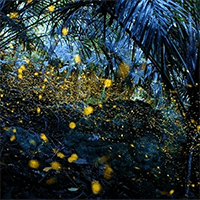Things to do in Kinkakuji/Kitano-tenmangu Area
Tenmangu Kitano Sugawara public which has been popular as a God of learning has been enshrined, the examination and employment activities, is popular as a place to pass pray as there is a divine favor for each test. The precinct, a number of cattle of the image, or better the head and stroking the cattle, has been with the disease is cured. In the spring, it is the precincts bloom is also of plum blossoms 1500, show us a view of the masterpiece. Ji historic was built in the Kamakura period is also referred to as the Golden Pavilion from Kinkaku of luxurious of the three-layer structure, high popularity from its luxurious appearance, has been known to Kyoto as a representative tourist spot. Arashiyama and is visited easy to spot because to go by bus from Gion. In this area, dressing and tea ceremony experiences, such as Me Yuzen, traditional crafts There is a wealth of activities that can be experience.
- Age 4~Age 100
- 1~2 hours
- 10:00 / 11:00 / 12:00 / 13:00 / 14:00 / 15:00 / 16:00
In this plan, you can choose your favorite from M course, T-shirt (90 – XXXL), tote bag (medium size), and the whole process of Japanese traditional craft "Roketsu dyeing" "Dyeing and drying from drawing" You will experience "until". No need for painting, even children are OK! !! A locust dyeing craftsman will carefully guide you. Choose from many sketches and combine them. Also, the original design is OK. Trace the sketch using a brush with wax, then put on boots, apron, and gloves and dye it yourself. After dyeing, remove the wax you drew and you're done. The part drawn with wax remains white as the original fabric without being dyed, and you can easily create simple and deep works dyed with wax, such as shades due to the thickness of the wax and crack patterns due to wax cracks. The work is completed in about 90 to 120 minutes and you can take it home on the day. ~ Flow of the day ~ ① There are many sketches available, so you can choose your favorite sketch from them. The original design is also OK ② Once the sketch is decided, trace the sketch using a brush with wax. Draw a rough sketch with the heated wax included in the brush. ③ Dye the cotton cloth with the sketch drawn with wax in the dye. Please enjoy the dyeing experience by yourself. ④ Soaping work: Put the dyed cotton cloth in a kettle with boiling water and remove only the wax from the cloth. ⑤ Wash the cotton cloth from which the wax has been removed, dehydrate it with a dehydrator, and then dry it. ⑥ You can take home the finished work on the day. Please take home your precious memories in Kyoto.
できるかなぁ〜と半信半疑で考えた下絵が、結構良い風合いで出来上がったので満足でした。結構作業が大変かと思いましたが、ご主人さんとお母さんのご協力もあり、お手軽に体験させてもらうことができました。今度は友人に紹介しようと思います。
- Age 4~Age 100
- 1~2 hours
- 10:00 / 11:00 / 12:00 / 13:00 / 14:00 / 15:00 / 16:00
In this plan, you can choose your favorite from M course, tenugui (35cmx98cm), tapestry (45cm x 90cm), goodwill (45cm x 90cm), and the whole process of Japanese traditional craft "Rouketsu dyeing" "Drawing a picture" From dyeing to drying ”. No need for painting, even children are OK! !! A locust dyeing craftsman will carefully guide you. Choose from many sketches and combine them. Also, the original design is OK. Trace the sketch using a brush with wax, then put on boots, apron, and gloves and dye it yourself. After dyeing, remove the wax you drew and you're done. The part drawn with wax remains white as the original fabric without being dyed, and you can easily create simple and deep works dyed with wax, such as shades due to the thickness of the wax and crack patterns due to wax cracks. The work is completed in about 90 to 120 minutes and you can take it home on the day. ~ Flow of the day ~ ① There are many sketches available, so you can choose your favorite sketch from them. The original design is also OK ② Once the sketch is decided, trace the sketch using a brush with wax. Draw a rough sketch with the heated wax included in the brush. ③ Dye the cotton cloth with the sketch drawn with wax in the dye. Please enjoy the dyeing experience by yourself. ④ Soaping work: Put the dyed cotton cloth in a kettle with boiling water and remove only the wax from the cloth. ⑤ Wash the cotton cloth from which the wax has been removed, dehydrate it with a dehydrator, and then dry it. ⑥ You can take home the finished work on the day. Please take home your precious memories in Kyoto.
- Age 4~Age 100
- 1~2 hours
- 10:00 / 11:00 / 12:00 / 13:00 / 14:00 / 15:00 / 16:00
In this plan, you can choose your favorite from S course, square size (45cm x 45cm, place mat (32cm x 45cm), tote bag (S size)), and the whole process of Japanese traditional craft "Rocket dyeing" "Draw a picture" You will experience "From things to dyeing and drying". No need for painting. Children are OK! The placemat dyeing craftsman will carefully guide you. Choose from many sketches and combine them. Also, the original design is OK. After tracing the sketch, put on boots, an apron, and gloves and dye it by yourself. After dyeing, remove the drawn wax. You can easily make a simple and deep work dyed with a placemat such as a crack pattern. The work is completed in about 90 to 120 minutes and you can take it home on the day. You can choose your favorite sketch. You can also use the original design. ② Once you have decided on the sketch, trace the sketch with a brush with a wax. ③ Draw the sketch with the heated and melted wax in the brush. ③ Draw the sketch with the wax. Dye the drawn cotton fabric by immersing it in dye. Enjoy the dyeing experience by yourself. ④ Soaping work: Put the dyed cotton fabric in a kettle boiled in boiling water and remove only the wax of the fabric. ⑤ Wash the cotton cloth from which the wax has been removed, dehydrate it with a dehydrator, and then dry it. ⑥ You can take the finished work home on the day. Please bring back your precious memories in Kyoto.
They taught us patiently and diligently so it’s really recommended for beginners too. There are many design that we can chose from, you can be as creative as you can.
- Age 5~Age 100
- 1~2 hours
- 13:00 / 15:00
This plan will take you to a traditional Japanese townhouse, "Machiya," and experience a flower arrangement lesson. First, after arriving, you will arrange flowers using seasonal flowers. After arranging the flowers, display your beautiful arrangement in front of the garden and take lots of wonderful photos. After that, you will be guided around the townhouse, which was built in the Meiji period. There are three storehouses and six small gardens, so you can feel the seasonal breeze. Feel free to take photos during your stay and fully experience Japanese culture.
- Age 0~Age 100
- 1~2 hours
- 13:00
This plan will take you to a traditional Japanese townhouse "Machiya" and participate in a tea ceremony in traditional costume in Kyoto. First, after arriving, you will be quickly dressed in a kimono made of real silk. After that, you will be guided around the townhouse built in the Meiji era. Listen to an explanation about the tea ceremony in the tea room and enjoy tea. You can experience the spirit of wabi-sabi as if you have traveled back in time to the Meiji era. Feel free to take photos during your stay and fully experience Japanese culture.
- Age 6~Age 80
- 1~2 hours
- 10:00 / 11:00 / 12:00 / 13:00 / 14:00 / 15:00 / 16:00
Recommended points: Alphabet engraving can be used as a favorite, a name, an anniversary present, or a lost child tag! 〇Free color combination 〇Experience class in a 90-year-old Kyomachiya + shop and gallery in the same building ○5 minute walk from Daitokuji-mae bus stop 〇Adults also welcome! ~~~~~~~~~~~~~~~~~~~~~~~~~~~~~~~~~~~~~~~~~~~~~~~~~~~~~~~~~~~~~~~~~~~~~~~~~ We are now open in Fujimori Dormitory! / Thank you for visiting Atelier AZU's page out of the many available ♪ Surrounded by many tools from a 100-year-old townhouse in Kyoto, you can find plates (brass) and copper made of the same material as 5-yen coins. Process it to make pet tags, key chains, and top parts of necklaces. You can create your own original work by carving your favorite alphanumeric characters into the metal. I can't help but get excited about the hands-on experience of making things that I don't normally get to do, such as sharpening metal with a file to make it round, hand-printing letters on metal, and twisting metal with tools to make frames. Of course, all the tools are professional grade. As a pet tag, you can also engrave the owner's name and the owner's mobile phone number on the back as a contact point in case the pet gets lost. You can take the finished product home on the day. [Price] You can choose from 3 colors: golden brass color, copper color, and mixed color. Same price for all [Size] Each large and small plate has a diameter of 2 cm - Recommended points - Can be used as a lost pet tag!・For promotion!・Women can also make matching items ♪ ・You can engrave anniversaries, etc. to commemorate milestones ♪ ・ Recommended for those who don't usually wear accessories ♪ ・ Private use in the retro atmosphere of an old folk house !・There are other artists' workshops in the same building, as well as a gallery and select shop!・There are cafes, restaurants, and facilities registered as tangible cultural properties nearby! ~Flow of the experience~1 Twist brass wire and copper wire to make a ring. 2 Shape the plate and process it with a hammer. 3 Engraved on the plate. You can also polish it. 4 Add a key ring and you're done! ~Access~○ 5 minutes walk from Kyoto city bus “Daitokuji-mae” ○ 2nd floor of the building next to Cafe Sarasa Nishijin ○ 15 minutes walk from Kuramaguchi subway station ○ Many coin parking lots nearby
- Age 4~Age 99
- 1~2 hours
- 10:00 / 16:30
It is a plan that you can experience three of Kimono, Tea ceremony and Ikebana by chartering. Tea ceremony is a lecturer of Urasenke, Ikebana is in charge of unbearable teacher and explanation in English is also possible.
海外からの来客に日本の文化を体験して頂きたく伺いました。外交を兼ねていたので絶対に失礼がないよう、環境などもご事前にお電話でご相談させて頂いたにもかかわらず、誠に残念ながらお連れしたことを後悔する結果となりました。当日は7万7760円事前支払いで貸切りでしたが、日本での旅で来客の一人がお腹を壊してしまい、観光先でのトイレ探しや薬局などに苦労し、事前の連絡をいれたものの到着が遅れてしまいました。本体験を主催している方は、到着した時にはすでに苛立ちをあらわに、体調への配慮の言葉一つありませんでした。外交官など外賓も迎えているという体験場所は古く、狭く、散らかり、薄暗く、和文化を伝えるには不適切で、着付け体験の着物・帯ともにみたこともないほど安っぽく、また押入れの中の透明の衣装ケースに雑に押し込まれているという酷い扱いでした。英語での対応はしてくれましたが、不慣れな方が「少しゆっくり話していただけますか?」と訪ねたにも関わらず、早口で聞き取りにくい英語での対応を続けられ、伝える、ではなく、説明を聞けという印象でした。いくつかの体験を省略し、時間内で終われるよう主催者側へも謝罪の上、配慮をしたつもりですが、時間より随分早く出口へ案内され、早く終えて帰りたいという意図があからさまで、お連れしたゲストの方々も苦笑いの状態でした。和文化の伝承をされるなら改善をしていただけることを願います。
- Age 0~Age 100
- 1~2 hours
- 18:00
You can enjoy the fantastically lit up 140-year-old townhouse, a cultural asset. The townhouse is lit up in hopes of ending the COVID-19 pandemic. Handmade lights made with an abundance of Japanese materials, such as washi paper, wood, and sake barrels, warmly illuminate the six gardens. Please enjoy the illuminated townhouse (building and garden) to your heart's content. This course will serve you carefully prepared kaiseki cuisine. Enjoy delicious food along with the beautiful lighting.
- Age 0~Age 100
- 1~2 hours
- 11:00 / 13:00
A very popular traditional bento served at tea parties that has been passed down for about 100 years. Bento is a menu that has been passed down at Tomidaya for 100 years. A tour of the townhouse, which is a cultural property, is also included. We will show you around the 140-year-old townhouse "Tomitaya" in Nishijin, Kyoto. Tomidaya was designated as a nationally registered tangible cultural property in 1999, and as a ``Museum of Nishijin Life'', the building is open to the public and the customs of Nishijin, Kyoto are introduced. Machiya life has been shaped by unchanging prayers, wishes, and gratitude since ancient times. Tomidaya started out as a production wholesaler in Nishijin about 140 years ago. This building is built by mixing charcoal into the land and closing the demon gate with amulets and salt, and enshrines Kojin (the god of fire), Benten (the god of water), and Yaoyorozu gods. Masu. In addition, there is a treasure trove where the spirit of gratitude that the 11th generation received when he jumped into the fire and saved the deity during the great fire at Ise Jingu in the Meiji period is enshrined, and is used in daily life. We are here to show you the spirit of hospitality that lives on in the past, the spirit of valuing God, and the way people have lived through generations, such as drinking tea, dancing Noh, and valuing culture.
最近チェックしたプラン
Please wait a moment
![[Kyoto/Nishikyogoku] Enjoy a 100% craftsmanship experience of traditional rocket dyeing! No need to draw, children are OK (T-shirt, tote bag)の画像](https://img.activityjapan.com/10/38536/10000003853601_qgB2j5KG_3.jpg?version=1631428867)
![[Kyoto/Nishikyogoku] Enjoy a 100% craftsmanship experience of traditional rocket dyeing! No need to draw, even children are OK (tenugui, tapestry, noren)の画像](https://img.activityjapan.com/10/38535/10000003853501_qgB2j5KG_3.jpg?version=1631428808)
![[Kyoto / Saikyogoku] Enjoy the 100% craftsmanship experience of traditional rocket dyeing! No need to draw, even children are OK (square size, place mat, tote bag)の画像](https://img.activityjapan.com/10/38533/10000003853301_qgB2j5KG_3.jpg?version=1631428749)
![[Kyoto Nishijin] Tomidaya Flower Arrangement Experienceの画像](https://img.activityjapan.com/10/56323/10000005632301_PQKR0hle_3.JPG?version=1726808951)
![[Kyoto Nishijin] Tour a 140-year-old townhouse, try on a kimono and experience the tea ceremonyの画像](https://img.activityjapan.com/10/56320/10000005632001_PQKR0hle_3.JPG?version=1726822322)
![[Kyoto/Kita Ward] 90 minutes experience making tags with brass! Pet tags and key chains ★Beginners, families, and couples welcome (reservations accepted until the morning of the day)の画像](https://img.activityjapan.com/10/50162/10000005016201_wRKSkATV_3.jpg?version=1724041562)
![[Kyoto / Kinkakuji] Chartered "Dressing & Tea Ceremony & Ikebana Experience" 1 minute walk from Kinkakuji!の画像](https://img.activityjapan.com/10/20588/10000002058801_1tltxr0S_3.JPG?version=1583719974)
![[Kyoto/Nishijin] Tomidaya Machiya Light-up Kaiseki Dinner [Includes Machiya Tour]の画像](https://img.activityjapan.com/10/36500/10000003650001_xyLMlfkE_3.jpg?version=1656039186)
![[Kyoto/Nishijin] You can enjoy a 100-year-old traditional lunch box at a townhouse where the gods live (with tour of the townhouse)の画像](https://img.activityjapan.com/10/51578/10000005157801_aIipu863_3.jpeg?version=1698287285)







